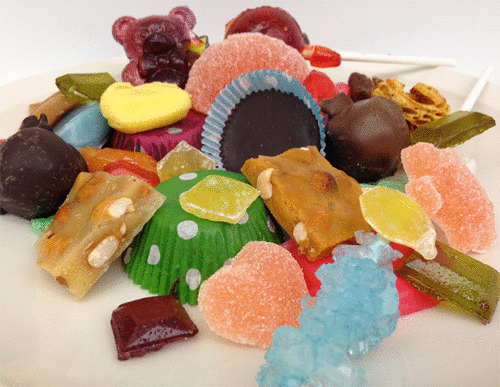当前位置:
X-MOL 学术
›
J. Chem. Educ.
›
论文详情
Our official English website, www.x-mol.net, welcomes your feedback! (Note: you will need to create a separate account there.)
Chemistry of Candy: A Sweet Approach to Teaching Nonscience Majors
Journal of Chemical Education ( IF 3 ) Pub Date : 2018-06-19 00:00:00 , DOI: 10.1021/acs.jchemed.7b00739 Jennifer Logan Bayline 1 , Halie M. Tucci 1 , David W. Miller 1 , Kaitlin D. Roderick 1 , Patricia A. Brletic 1
Journal of Chemical Education ( IF 3 ) Pub Date : 2018-06-19 00:00:00 , DOI: 10.1021/acs.jchemed.7b00739 Jennifer Logan Bayline 1 , Halie M. Tucci 1 , David W. Miller 1 , Kaitlin D. Roderick 1 , Patricia A. Brletic 1
Affiliation

|
Candy, an everyday treat, is a convenient theme for teaching chemistry. Making candy incorporates solution concentration, colligative properties, and phase transformations while flavoring and color reflect synthesis or extraction. In this article, a nonscience major laboratory course on candy chemistry is presented. The course combines laboratory experiments and candy-making exercises, illustrating general chemistry principles and data collection. For example, students investigate crystal formation with rock candy and fudge, browning reactions with UV–vis spectroscopy and caramels, enzyme kinetics with polarimetry and cherry cordials, and freezing point depression with temperature measurements and ice cream. Imitation and natural flavors are obtained through Fischer esterification and distillation, respectively, while colorants are characterized through chromatography and spectroscopy. The course incorporates statistics through sensory analysis and color distribution. Student assessment and feedback as well as a poster/tasting session are also described.
中文翻译:

糖果化学:非科学专业教学的一种甜蜜方法
日常使用的糖果Candy是化学教学的便捷主题。制作糖果结合了溶液浓度,依数性和相变,而调味剂和颜色则反映了合成或提取。本文介绍了有关糖果化学的非科学专业实验室课程。该课程结合了实验室实验和糖果制作练习,阐述了一般的化学原理和数据收集。例如,学生研究冰糖和软糖的晶体形成,紫外可见光谱和焦糖色的褐变反应,旋光法和樱桃亲和力的酶动力学以及温度测量和冰淇淋的冰点降低。仿制香料和天然香料分别通过Fischer酯化和蒸馏获得,而着色剂则通过色谱和光谱法进行表征。该课程通过感官分析和颜色分布来整合统计数据。还描述了学生的评估和反馈以及海报/品尝会。
更新日期:2018-06-19
中文翻译:

糖果化学:非科学专业教学的一种甜蜜方法
日常使用的糖果Candy是化学教学的便捷主题。制作糖果结合了溶液浓度,依数性和相变,而调味剂和颜色则反映了合成或提取。本文介绍了有关糖果化学的非科学专业实验室课程。该课程结合了实验室实验和糖果制作练习,阐述了一般的化学原理和数据收集。例如,学生研究冰糖和软糖的晶体形成,紫外可见光谱和焦糖色的褐变反应,旋光法和樱桃亲和力的酶动力学以及温度测量和冰淇淋的冰点降低。仿制香料和天然香料分别通过Fischer酯化和蒸馏获得,而着色剂则通过色谱和光谱法进行表征。该课程通过感官分析和颜色分布来整合统计数据。还描述了学生的评估和反馈以及海报/品尝会。



























 京公网安备 11010802027423号
京公网安备 11010802027423号